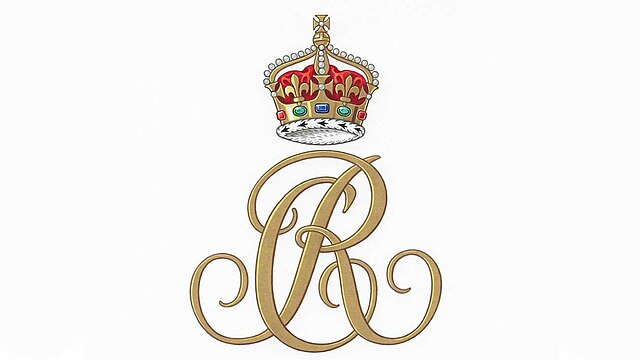Queen Camilla recently visited Kenya and participated in a traditional dance with Maasai women. During her visit to the Brooke Donkey Sanctuary in Nairobi, she was presented with Maasai traditional regalia. Additionally, she had the opportunity to feed milk to orphaned elephants at the Sheldrick Wildlife Trust Elephant Orphanage.
The Queen’s dance with the Maasai women was a highlight of her visit. The Maasai are a tribal group in Kenya known for their vibrant dances and colorful attire. Camilla embraced the local culture by joining in the dance and immersing herself in the experience.
At the Brooke Donkey Sanctuary, Queen Camilla received traditional regalia from the Maasai people. This gesture symbolizes the respect and appreciation for her visit. It is customary for visitors to be presented with gifts that hold cultural significance, and Camilla graciously accepted the regalia.
Another memorable moment of the visit was when Queen Camilla fed milk to orphaned elephants at the Sheldrick Wildlife Trust Elephant Orphanage. This sanctuary is dedicated to rescuing and rehabilitating orphaned elephants, providing them with a safe and nurturing environment. Camilla’s interaction with these gentle giants highlights her commitment to wildlife conservation and her compassion for animals.
Overall, Queen Camilla’s visit to Kenya was a celebration of culture and a demonstration of her support for conservation efforts. Her participation in the traditional dance and her interactions with the elephants showcased her genuine interest in and respect for the local community and its wildlife.
Original news source: Dancing Queen! Camilla in Kenya animal sanctuary visit (BBC)
Listen
Slow
Normal
Fast
Group or Classroom Activities
Warm-up Activities:
– News Summary
Instructions: Have students read the article and write a summary of the key points. They should include information about Queen Camilla’s visit to Kenya, her participation in a traditional dance with Maasai women, receiving traditional regalia, and feeding milk to orphaned elephants.
– Opinion Poll
Instructions: Divide the class into pairs or small groups. Have them discuss their opinions on Queen Camilla’s visit to Kenya and her interactions with the local community and wildlife. Then, have each group create a poll with questions about the visit and ask other groups to answer. Finally, have a class discussion to share and compare the results of the polls.
– Sketch It
Instructions: Give each student a sheet of paper and ask them to draw a scene from Queen Camilla’s visit to Kenya. They should include details about the traditional dance, the regalia, and the interaction with elephants. After they finish, have them share their drawings with a partner and explain what they included in their sketches.
– Vocabulary Pictionary
Instructions: Write a list of vocabulary words from the article on the board. Divide the class into two teams. One student from each team will come to the front of the class and choose a word. They must then draw a picture to represent the word, without speaking or writing any letters or numbers. The team members must guess the word based on the drawing. The team with the most correct guesses wins.
– Speed Summarizing
Instructions: Divide the class into pairs. Give each pair a timer. One student will have one minute to summarize the article to their partner. The partner must then summarize the article in 30 seconds, and so on, until they can summarize the article in just 10 seconds. After each round, have the pairs switch roles. Finally, ask a few pairs to share their 10-second summaries with the class.
Comprehension Questions:
1. What did Queen Camilla do during her visit to Kenya?
2. What is the significance of the traditional regalia presented to Queen Camilla?
3. Why is it customary for visitors to be presented with gifts?
4. What is the purpose of the Brooke Donkey Sanctuary?
5. What does Queen Camilla’s interaction with the orphaned elephants demonstrate?
6. What was the highlight of Queen Camilla’s visit to Kenya?
7. What is the purpose of the Sheldrick Wildlife Trust Elephant Orphanage?
8. What does Queen Camilla’s visit to Kenya demonstrate about her character and values?
Go to answers ⇩
Listen and Fill in the Gaps:
Queen Camilla recently visited Kenya and (1)______ in a traditional dance with (2)______ women. During her visit to the Brooke Donkey Sanctuary in Nairobi, she was presented with Maasai traditional regalia. Additionally, she had the opportunity to feed milk to (3)______ elephants at the Sheldrick Wildlife (4)______ Elephant Orphanage.
The Queen’s dance with the Maasai women was a highlight of her visit. The Maasai are a tribal group in Kenya known for their vibrant dances and colorful attire. (5)______ embraced the local (6)______ by (7)______ in the dance and immersing herself in the experience.
At the Brooke Donkey Sanctuary, Queen Camilla received traditional (8)______ from the Maasai people. This gesture symbolizes the respect and appreciation for her visit. It is customary for visitors to be presented with gifts that hold cultural significance, and Camilla graciously accepted the regalia.
Another memorable moment of the visit was when (9)______ Camilla fed milk to orphaned (10)______ at the Sheldrick Wildlife Trust Elephant Orphanage. This sanctuary is dedicated to (11)______ and rehabilitating orphaned elephants, providing them with a safe and (12)______ environment. Camilla’s interaction with these gentle giants highlights her commitment to (13)______ conservation and her compassion for animals.
Overall, Queen Camilla’s visit to Kenya was a (14)______ of culture and a demonstration of her support for conservation efforts. Her (15)______ in the traditional (16)______ and her interactions with the elephants showcased her genuine interest in and respect for the local community and its wildlife.
Go to answers ⇩
Discussion Questions:
Students can ask a partner these questions, or discuss them as a group.
1. What is a traditional dance? Why do you think it is important for Queen Camilla to participate in one?
2. How would you feel if you were presented with traditional regalia from a different culture? Why?
3. Have you ever visited a sanctuary or rehabilitation center for animals? If so, what was your experience like?
4. Do you think it is important for public figures to show support for conservation efforts? Why or why not?
5. How do you think Queen Camilla’s visit to Kenya helped promote cultural understanding and appreciation?
6. Have you ever participated in a cultural event or activity from a different country? If so, what was it and how did you feel about it?
7. What do you think are the benefits of interacting with animals in a sanctuary or orphanage setting?
8. Do you think it is important for visitors to accept gifts that hold cultural significance? Why or why not?
9. How do you think Queen Camilla’s visit to the donkey sanctuary and elephant orphanage can raise awareness about wildlife conservation?
10. Why do you think Queen Camilla’s interaction with the elephants was considered a memorable moment of her visit?
11. How do you think the Maasai people felt about Queen Camilla joining in their traditional dance?
12. Do you think it is important for public figures to showcase their interest in and respect for different cultures? Why or why not?
13. What other ways do you think Queen Camilla could have shown her support for conservation efforts during her visit to Kenya?
14. How do you think the local community in Kenya felt about Queen Camilla’s visit?
15. Have you ever participated in an event or activity that celebrated your own culture? If so, how did it make you feel?
Individual Activities
Vocabulary Meanings:
Match each word to its meaning.
Words:
1. Maasai
2. regalia
3. elephants
4. dance
5. sanctuary
6. visit
7. culture
8. wildlife
Meanings:
(a) Gentle giants that are rescued and rehabilitated in a safe environment.
(b) A highlight of Queen Camilla’s visit to Kenya, showcasing her genuine interest in the local community.
(c) The customs, beliefs, and practices of a particular group of people.
(d) A place dedicated to providing a safe and nurturing environment for orphaned animals.
(e) A tribal group in Kenya known for their vibrant dances and colorful attire.
(f) Queen Camilla’s trip to Kenya, demonstrating her support for conservation efforts.
(g) Traditional clothing or accessories that hold cultural significance.
(h) The act of moving rhythmically to music.
Go to answers ⇩
Multiple Choice Questions:
1. What did Queen Camilla do during her visit to Kenya?
(a) Went on a safari
(b) Visited a museum
(c) Attended a political summit
(d) Participated in a traditional dance with Maasai women
2. Who are the Maasai?
(a) A tribal group in Kenya known for their vibrant dances and colorful attire
(b) A group of farmers in Kenya
(c) A religious organization in Kenya
(d) A political party in Kenya
3. What did Queen Camilla receive at the Brooke Donkey Sanctuary?
(a) A donkey as a gift
(b) A painting of elephants
(c) Traditional regalia from the Maasai people
(d) A book about wildlife conservation
4. What is the purpose of the Sheldrick Wildlife Trust Elephant Orphanage?
(a) To provide shelter for homeless people
(b) To rescue and rehabilitate orphaned elephants
(c) To breed elephants for tourism purposes
(d) To conduct research on elephant behavior
5. What did Queen Camilla do at the Sheldrick Wildlife Trust Elephant Orphanage?
(a) Went on a guided tour of the sanctuary
(b) Adopted an elephant
(c) Fed milk to orphaned elephants
(d) Took photographs of the elephants
6. What does Queen Camilla’s visit to Kenya demonstrate?
(a) Her support for conservation efforts
(b) Her interest in politics
(c) Her love for dancing
(d) Her dislike for animals
7. What did Queen Camilla’s participation in the traditional dance showcase?
(a) Her desire to become a professional dancer
(b) Her genuine interest in and respect for the local culture
(c) Her boredom during the visit
(d) Her lack of coordination
8. What was the purpose of Queen Camilla’s visit to Kenya?
(a) To promote tourism in Kenya
(b) To meet with political leaders
(c) To learn about the history of Kenya
(d) To celebrate culture and support conservation efforts
Go to answers ⇩
True or False Questions:
1. Queen Camilla graciously accepted the traditional regalia presented to her at the Brooke Donkey Sanctuary.
2. The Queen’s dance with the Maasai women was a lowlight of her visit.
3. Queen Camilla had the opportunity to feed milk to orphaned elephants at the Sheldrick Wildlife Trust Elephant Orphanage.
4. Camilla rejected the local culture by refusing to join in the dance and avoiding the experience.
5. During her visit to the Brooke Donkey Sanctuary in Nairobi, she was presented with Western traditional regalia.
6. Camilla’s interaction with the elephants at the Sheldrick Wildlife Trust Elephant Orphanage showcased her commitment to wildlife conservation and her compassion for animals.
7. Queen Camilla recently visited Kenya and participated in a traditional dance with Maasai women.
8. The Maasai are a modern group in Kenya known for their dull dances and plain attire.
Go to answers ⇩
Write a Summary:
Write a summary of this news article in two sentences.
Check your writing now with the best free AI for English writing!
Writing Questions:
Answer the following questions. Write as much as you can for each answer.
Check your answers with our free English writing assistant!
1. What is the significance of Queen Camilla’s dance with the Maasai women during her visit to Kenya?
2. Why is it customary for visitors to be presented with gifts that hold cultural significance?
3. What is the purpose of the Brooke Donkey Sanctuary in Nairobi?
4. How does Queen Camilla’s interaction with the orphaned elephants at the Sheldrick Wildlife Trust Elephant Orphanage demonstrate her commitment to wildlife conservation?
5. What does Queen Camilla’s visit to Kenya say about her interest in and respect for the local community and its wildlife?
Answers
Comprehension Question Answers:
1. What did Queen Camilla do during her visit to Kenya?
– Queen Camilla participated in a traditional dance with Maasai women, visited the Brooke Donkey Sanctuary, and fed milk to orphaned elephants at the Sheldrick Wildlife Trust Elephant Orphanage.
2. What is the significance of the traditional regalia presented to Queen Camilla?
– The traditional regalia presented to Queen Camilla symbolizes respect and appreciation for her visit. It is a customary gesture to present visitors with gifts that hold cultural significance.
3. Why is it customary for visitors to be presented with gifts?
– It is customary for visitors to be presented with gifts as a sign of respect and hospitality. These gifts often hold cultural significance and serve as a way to honor the visitor.
4. What is the purpose of the Brooke Donkey Sanctuary?
– The purpose of the Brooke Donkey Sanctuary is to provide care and support for donkeys in need. It is a sanctuary dedicated to the welfare and well-being of donkeys.
5. What does Queen Camilla’s interaction with the orphaned elephants demonstrate?
– Queen Camilla’s interaction with the orphaned elephants demonstrates her commitment to wildlife conservation and her compassion for animals. It shows her genuine interest in and concern for the well-being of these animals.
6. What was the highlight of Queen Camilla’s visit to Kenya?
– The highlight of Queen Camilla’s visit to Kenya was her participation in a traditional dance with Maasai women.
7. What is the purpose of the Sheldrick Wildlife Trust Elephant Orphanage?
– The purpose of the Sheldrick Wildlife Trust Elephant Orphanage is to rescue and rehabilitate orphaned elephants, providing them with a safe and nurturing environment.
8. What does Queen Camilla’s visit to Kenya demonstrate about her character and values?
– Queen Camilla’s visit to Kenya demonstrates her respect for and appreciation of different cultures, her commitment to wildlife conservation, and her compassion for animals. It shows her genuine interest in and support for these causes.
Go back to questions ⇧
Listen and Fill in the Gaps Answers:
(1) participated
(2) Maasai
(3) orphaned
(4) Trust
(5) Camilla
(6) culture
(7) joining
(8) regalia
(9) Queen
(10) elephants
(11) rescuing
(12) nurturing
(13) wildlife
(14) celebration
(15) participation
(16) dance
Go back to questions ⇧
Vocabulary Meanings Answers:
1. Maasai
Answer: (e) A tribal group in Kenya known for their vibrant dances and colorful attire.
2. regalia
Answer: (g) Traditional clothing or accessories that hold cultural significance.
3. elephants
Answer: (a) Gentle giants that are rescued and rehabilitated in a safe environment.
4. dance
Answer: (b) A highlight of Queen Camilla’s visit to Kenya, showcasing her genuine interest in the local community.
5. sanctuary
Answer: (d) A place dedicated to providing a safe and nurturing environment for orphaned animals.
6. visit
Answer: (f) Queen Camilla’s trip to Kenya, demonstrating her support for conservation efforts.
7. culture
Answer: (c) The customs, beliefs, and practices of a particular group of people.
8. wildlife
Answer: (h) The act of moving rhythmically to music.
Go back to questions ⇧
Multiple Choice Answers:
1. What did Queen Camilla do during her visit to Kenya?
Answer: (d) Participated in a traditional dance with Maasai women
2. Who are the Maasai?
Answer: (a) A tribal group in Kenya known for their vibrant dances and colorful attire
3. What did Queen Camilla receive at the Brooke Donkey Sanctuary?
Answer: (c) Traditional regalia from the Maasai people
4. What is the purpose of the Sheldrick Wildlife Trust Elephant Orphanage?
Answer: (b) To rescue and rehabilitate orphaned elephants
5. What did Queen Camilla do at the Sheldrick Wildlife Trust Elephant Orphanage?
Answer: (c) Fed milk to orphaned elephants
6. What does Queen Camilla’s visit to Kenya demonstrate?
Answer: (a) Her support for conservation efforts
7. What did Queen Camilla’s participation in the traditional dance showcase?
Answer: (b) Her genuine interest in and respect for the local culture
8. What was the purpose of Queen Camilla’s visit to Kenya?
Answer: (d) To celebrate culture and support conservation efforts
Go back to questions ⇧
True or False Answers:
1. Queen Camilla graciously accepted the traditional regalia presented to her at the Brooke Donkey Sanctuary. (Answer: True)
2. The Queen’s dance with the Maasai women was a lowlight of her visit. (Answer: False)
3. Queen Camilla had the opportunity to feed milk to orphaned elephants at the Sheldrick Wildlife Trust Elephant Orphanage. (Answer: True)
4. Camilla rejected the local culture by refusing to join in the dance and avoiding the experience. (Answer: False)
5. During her visit to the Brooke Donkey Sanctuary in Nairobi, she was presented with Western traditional regalia. (Answer: False)
6. Camilla’s interaction with the elephants at the Sheldrick Wildlife Trust Elephant Orphanage showcased her commitment to wildlife conservation and her compassion for animals. (Answer: True)
7. Queen Camilla recently visited Kenya and participated in a traditional dance with Maasai women. (Answer: True)
8. The Maasai are a modern group in Kenya known for their dull dances and plain attire. (Answer: False)
Go back to questions ⇧













